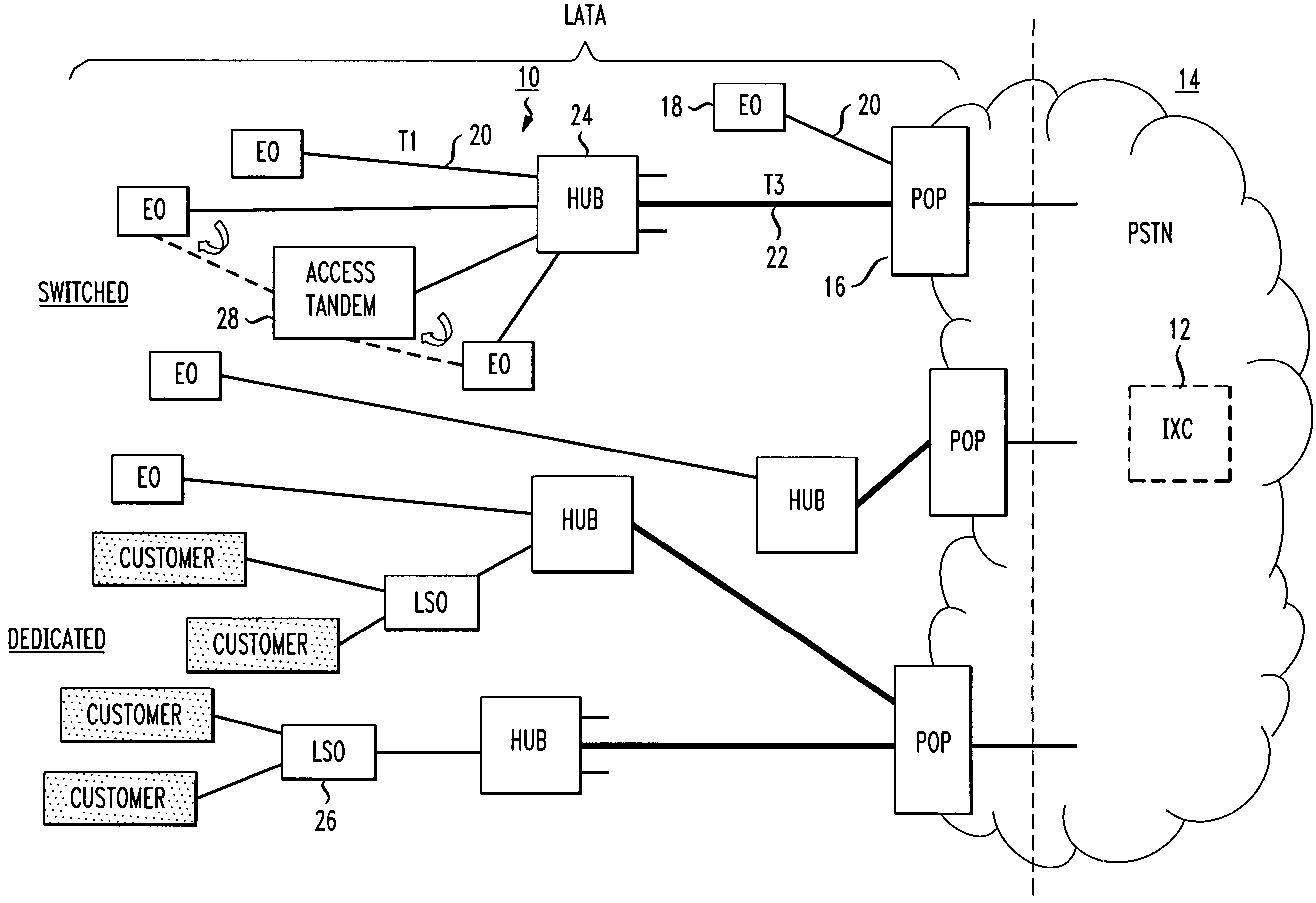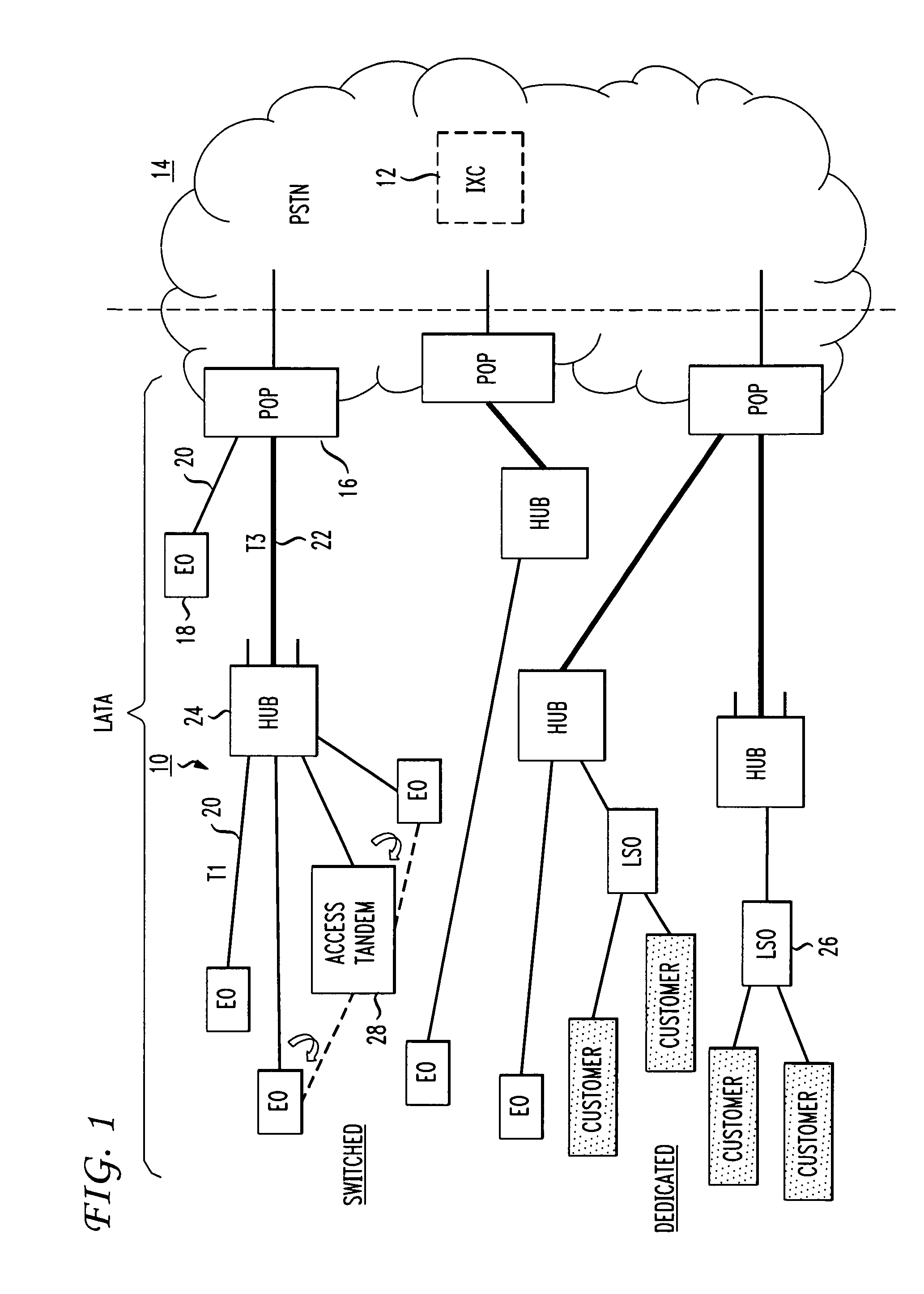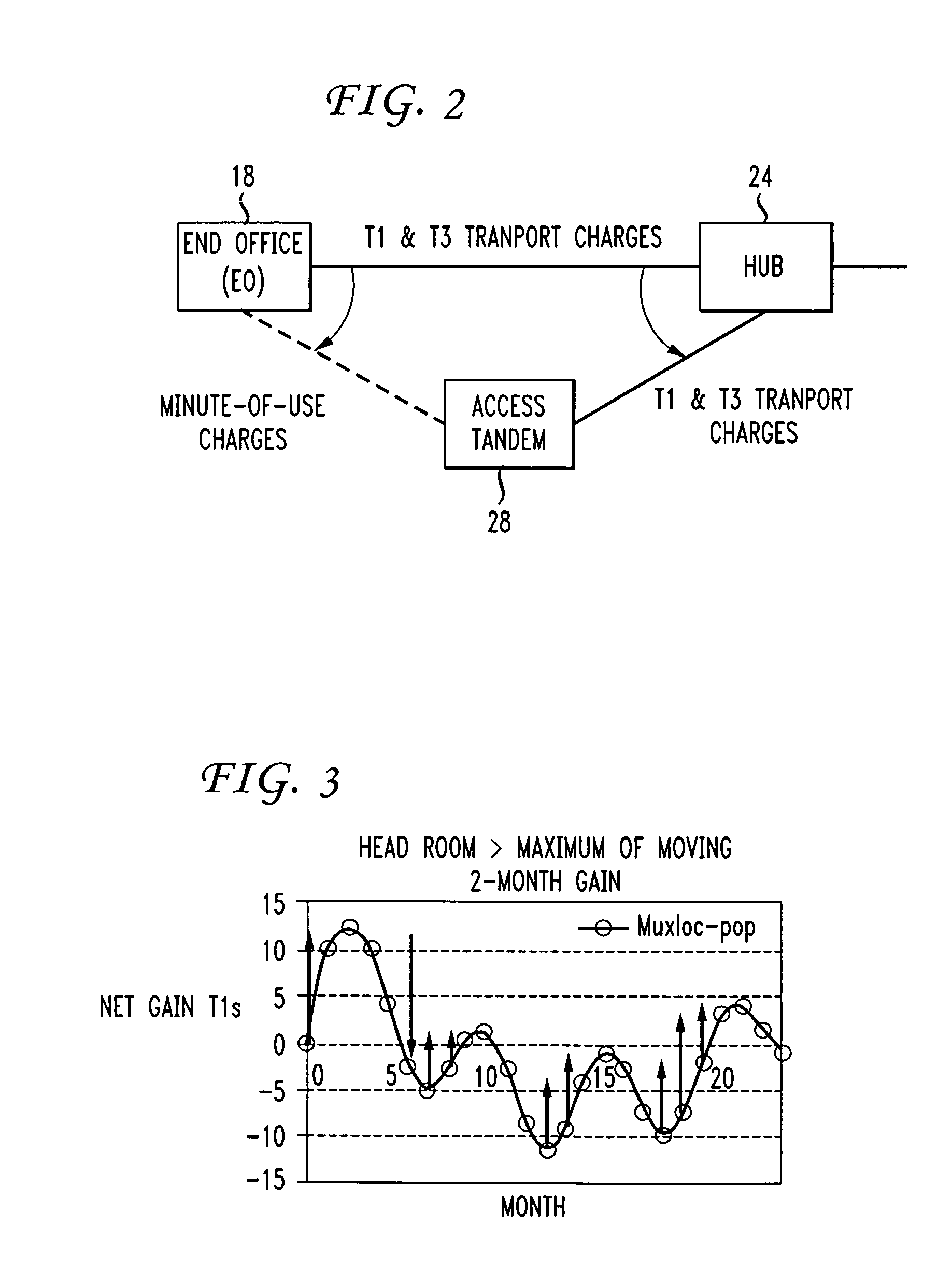Access network optimization methodology for leased switched and dedicated facilities
a technology of leased switched and dedicated facilities, applied in the field of leased switched and dedicated facility access network optimization methodology, can solve the problems of affecting the efficiency of leased switching, and similar cost issues known to arise for communication companies with respect to leasing, so as to eliminate unnecessary network churn and achieve minimal savings
- Summary
- Abstract
- Description
- Claims
- Application Information
AI Technical Summary
Benefits of technology
Problems solved by technology
Method used
Image
Examples
Embodiment Construction
[0026]In order to best understand the cost savings benefits of the methodology of the present invention, it is helpful to understand an exemplary network architecture as it exists within the access arrangements between an interexchange (i.e., long distance) carrier and a local service provider. While the particular architecture may differ in various circumstances, the individual components forming these networks are essentially the same. An understanding of the location and operation of these individual components is an important aspect for properly understanding the cost saving benefits of the present invention.
[0027]FIG. 1 illustrates an exemplary network architecture associated with a specific “partition” of a local network, in this case a particular Local Access Transport Area (LATA) 10. In general, an interexchange carrier 12 supports voice and data traffic carried by switches and dedicated facilities within a larger network 14 (such as the public switched telephone network, or...
PUM
 Login to View More
Login to View More Abstract
Description
Claims
Application Information
 Login to View More
Login to View More - R&D
- Intellectual Property
- Life Sciences
- Materials
- Tech Scout
- Unparalleled Data Quality
- Higher Quality Content
- 60% Fewer Hallucinations
Browse by: Latest US Patents, China's latest patents, Technical Efficacy Thesaurus, Application Domain, Technology Topic, Popular Technical Reports.
© 2025 PatSnap. All rights reserved.Legal|Privacy policy|Modern Slavery Act Transparency Statement|Sitemap|About US| Contact US: help@patsnap.com



